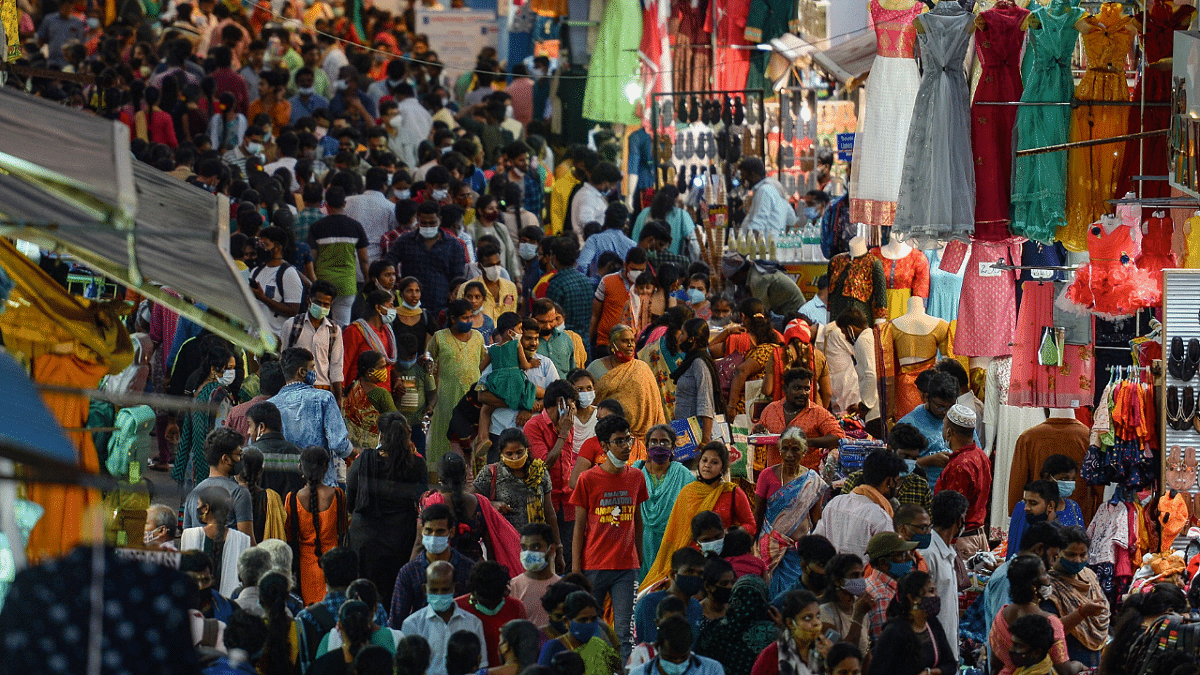
Daily Covid-19 cases in Chennai are on a downward trend for the past few days though the Test Positivity Rate (TPR) remains high at 27 per cent, even as the number of people testing positive for coronavirus in other parts of Tamil Nadu, especially in rural areas, continue to increase substantially each passing day.
From 1,481 daily cases on January 1 to 28,561 cases on January 20 alone, Tamil Nadu is witnessing an exponential increase in Covid-19 patients with the TPR jumping from 1.4 per cent to over 17 per cent in just 20 days. The testing was ramped up from 1.03 lakh samples to 1.56 lakh on January 13, the season’s highest, though the numbers dipped one day and increased the next day.
The fresh infections, which are predominantly the Omicron variant, are widespread across Tamil Nadu with 27 of the total 38 districts having over 10 per cent TPR as of Thursday evening. Health Minister Ma Subramanian over 24,000 of the 1.29 hamlets and 28,219 of 1.27 lakh urban streets have Covid-19 cases. Coimbatore’s TPR is 27.3 per cent, Tirunelveli (24.6 per cent), Tiruvallur (22.8 per cent), and Chengalpattu (27.2 per cent).
As far as Chennai is concerned, the city attained its peak, so far, in the third wave on January 16 when it reported 8,987 cases, an all-time high. Since then, the cases are reducing considerably with 8,591 fresh patients on January 17, 8,305 (Jan 18), 8,007 (Jan 19), and 7, 520 (Jan 20).
As of January 20 evening, Chennai had 62,007 active cases with the government saying that a majority of them are under home isolation with “mild symptoms.” Containment measures like monitoring those isolated at home, teleconsultation, and ramping up of testing are some of the reasons attributed to the decrease in the number of cases.
Experts say a similar trend was noticed during the second wave of Covid-19 infections in May 2021 when tier-II cities like Coimbatore, Madurai, and other districts began reporting a high number of daily cases just when the fresh cases in Chennai ebbed.
“In any pandemic, the infection spreads from a highly congested place to a less congested place and then to the least congested place. That explains the reason for cities and districts other than Chennai reporting a high number of cases now. And the travel from Chennai to districts for Pongal festivities could have also contributed indirectly to the increase,” Dr J Amalorpavanathan, member of State Planning Commission, told DH.
Besides the increasing number of active cases, though the hospitalisation still remains low at less than 15 per cent in the state, what has caused worry among the health department and healthcare workers is the death rate among those above the age of 50 and the unvaccinated.
This is a cause of concern, according to health experts, as the vaccination percentage of elders in the state of Tamil Nadu is comparatively less at around 63 per cent for the first dose and around 50 per cent for the second dose.
Also Read: World breaks daily Covid case record
Public health expert Dr K Kolandaswamy told DH that the death rate among unvaccinated elders and those with uncontrolled comorbidities among the vaccinated and unvaccinated population is a cause of concern.
“We have been warning not to take this third wave as mild. People above the age of 50 and not vaccinated yet should be convinced to take their jabs. Even among the vaccinated population, those with uncontrolled diabetes should restrict their movement, if possible, and stay indoors. This wave is proving to be dangerous for the unvaccinated and those with severe comorbidities,” Dr Kolandaswamy, former Director of Public Health, said.
An administrative analysis by the Health Department has found that of the 191 deaths in the first 15 days of January 2022, 163 of them (85.3 per cent) were more than 50 years old.
The analysis also found that of the 191 persons, 181 (94.7 per cent) of them had one or other co-morbidity associated. In a previous analysis done between August and October, the government found around 84 per cent of those who died due to Covid-19 were unvaccinated.
Watch the latest DH Videos here: